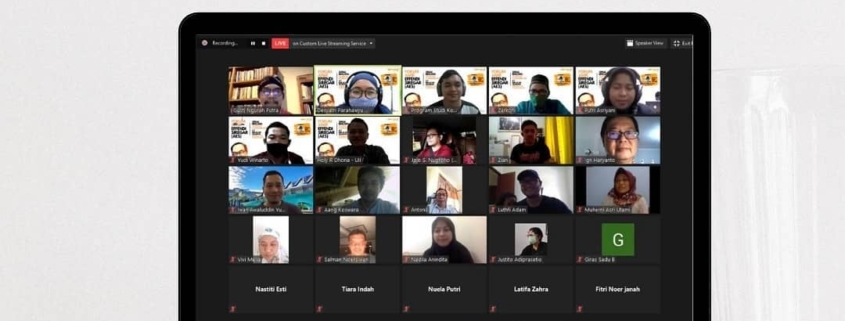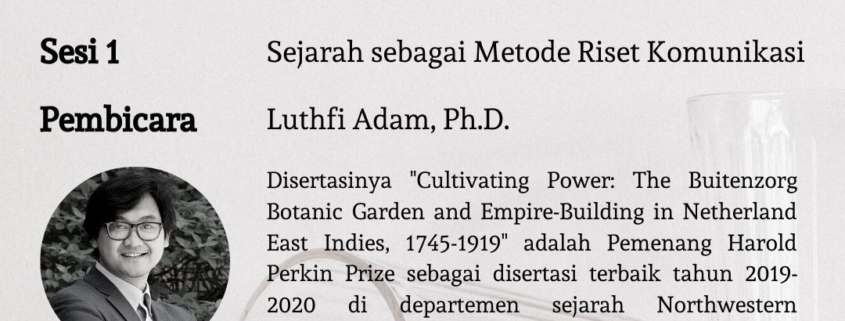Kompas pattern has always been, every time there is a regime change, it supports the ruler. Kompas stated in a Kompas editorial on September 28, 1966. Kompas wrote that the PKI was a real manifestation of a misinterpretation of Pancasila. But when the ruler was weak, he started to dare to be critical.
Wijayanto said that in 1966 there was a special column called Kompasiana in Kompas. This column is managed by PK Ojong. But in 1971, he decided to stop writing in it, because Suharto initially embraced the press, on the contrary.
“At that time he showed his authoritarianism to the media. Suharto’s honeymoon period and the media ended in the early 70-71s,” Wijayanto said in the 6th Amir Effendi Siregar (AES) discussion series on August, 15th, 2020 broadcast by Uniicoms TV. , The first online TV at UII belonging to the Communication Science Department of UII.
The AES Forum is an endeavor of the UII Communication Science Department to perpetuate the spirit and critical ideas in media and communication studies. This spirit is the credo of Amir Effendi Siregar, the founder of this department, said Holy Rafika Dhona, a lecturer of Department of Communication Science cum moderator who also focuses on writing mustadh’afin studies in books entitled Prophetic Communication (Bahasa: Komunikasi Profetik).
“I think it is useless, if I write honestly, this newspaper will be threatened. But if I write according to the authority’s request, then I will not be able to deal with my own conscience, of course it is detrimental,” said Wijayanto imitating PK Ojong’s words, which decided to stop the Kompasiana rubric. Kompasiana, which contained critical writings on the regime, was considered to have injured President Soeharto at that time.
“Pak Ojong does not want to apologize and say that he will become a corpse now or later. It’s the same. But Jakob Oetama (one of the founders of Kompas) just went ahead and made his habitus Kompas just as it. Kompas habitus is Jakob’s habitus,” added Wijayanto who is also the Director of Center for Media and Democracy, LP3ES.
In the early 70s, Kompas’s strategy to survive from bredel was to get closer to power. In 1973 Jakob Oetama received an award from Soeharto. Evidence of closeness with Suharto. Wijayato, who is also Diponegoro University’s Communication lecturer, said, “Apart from that, from Daniel Dhakidae’s dissertation, Kompas also received a loan from BNI (National Bank of Indonesia) of 235 million. Which at that time was very large and was a private sector, which not all media received,” said Wijayanto.
However, in 1978, on the anniversary of the 32nd Indonesian press day at the palace, after Kompas was banned, Jakob met Suharto. At that time, while shaking hands, Jakob Oetama said, “Matur nuwun Sampun diparingaken terbit maleh. (Thank you for being allowed to publish again),” said Wijayanto imitating. Then President Soeharto replied with a smile, “Don’t even try it again.” Previously, it was noted that Kompas was banned from January 21 to February 3, 1978.
Suharto gave a condition for Kompas to be published again, said Wija, Wijayanto’s nickname: sign an apology contract that promises not to disclose the president’s wealth, the president’s family, etc.
After those moments, Kompas is still alive.
“However, when Suharto’s legitimacy was dim, on May 14, 1998, Kompas began to become critical,” said Wijayanto. Kompas wrote in the 14th May 1998 edition, if the people no longer want it, the President is ready to resign.
In fact, this incident occurred during Suharto’s trip from Cairo to Jakarta. James Luhulima, a journalist from Kompas, in his book The Longest Days (Towards the Resignation of President Soeharto), wrote that they (journalists) were actually trying to persuade President Suharto that he wanted to resign. “We actually know that Suharto has no intention of resigning. But we ask, what if the people don’t want you anymore as president. Then the answer is that if the people don’t want me anymore, I will resign,” said Wijayanto, imitating James Luhulima.
So Kompas, together with other social forces, came to put pressure on it and created an atmosphere for Suharto as if he were ready to resign. Although on May 16 Suharto denied he was ready to resign.
The history of the media in the Kompas biography is a valuable lesson. History records that even during Suharto’s order, Kompas was oppressed under the regime’s power, at a weak point of power, Kompas began to show its side.
This story is the result of Wijayanto’s dissertation. Wijayanto conducted ethnographic research on Kompas Daily from January 2014 to June 2015. “This is a dissertation in Leiden whose manuscript has been submitted since 2018,” said Wijayanto.
In the discussion session of his dissertation in the Netherlands, Wijayanto’s discussion was written in a local newspaper in Dutch with the title: polite watchdog. The discussion was also included in the Kompas under a different title: Kompas Newspaper Across the Ages.







